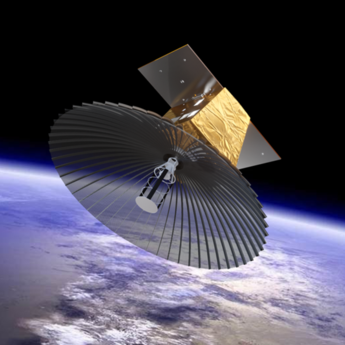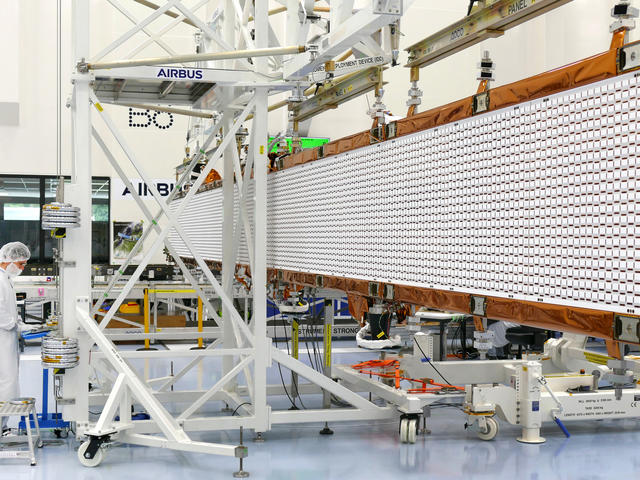The fourth Synthetic Aperture Radar (SAR) for the Copernicus Sentinel-1 satellite series has been successfully delivered by Airbus Defence and Space. Weighing in at 860 kg and measuring 12.3 by 0.9 metres, the Sentinel-1D SAR will ensure data continuity of insights only possible from space.
Sentinel-1D is equipped with the SAR instrument (C-band radar) to provide all-weather, day-and-night radar imagery of the entire Earth’s surface as part of the Copernicus programme funded by the European Union and the European Space Agency (ESA). Thales Alenia Space is prime contractor for the Sentinel-1 satellites with Airbus responsible for both radars led by Friedrichshafen (Germany), including electronics subsystems made by Airbus in Portsmouth.
Airbus’ Sentinel-1 Instrument Project Manager Marcus Glatt said: “This delivery is the latest major milestone in the successful history of building the four Sentinel-1 radar instruments. We would like to thank the industrial team of nearly a dozen subcontractors across Europe for providing more than 1000 elements for the four instruments. Great team spirit and high-quality deliveries are key to our success since the first Sentinel-1 instrument contract was awarded to Airbus in 2007.”
The C-band radar beam the instrument produces can determine changes in the Earth’s surface with an accuracy of a few millimetres. Synthetic Aperture Radar (SAR) has the advantage of operating at wavelengths not impeded by cloud cover or lack of illumination and can acquire data over a site during day or night time under all weather conditions.
The imagery is supplied routinely and systematically for maritime and land monitoring (e.g. oil spill monitoring, detection of ships and illegal fishing), emergency and humanitarian aid response (like flooding, earthquakes, landslides and volcanic eruptions), sea ice monitoring, climate change and security. Having a primary operational mode over land and another over open ocean enables pre-programmed operation. In the main operational mode suitable for most applications, a radar image is acquired over a wide swath (250 km) with high geometric (typically 5 m by 20 m) resolution.
The antenna consists of a centre panel which will be fixed to the satellite platform and two deployable antenna wings with two panels each. The SAR instrument successfully passed a rigorous test campaign before delivery.
After final integration by a joint team at Thales Alenia Space in Rome, Sentinel-1D will be readied for launch on a Vega-C launcher from Europe’s Spaceport in Kourou, French Guiana. Up to the end of May 2022, more than 620,000 users had more than 39 million Sentinel-1 products< equivalent to 48 million gigabytes of data.
Since April 2014 the Sentinel-1 mission has been the “Radar Vision” for Copernicus, the joint programme of the European Commission (EC) and the European Space Agency (ESA). Copernicus is a European undertaking for the implementation of information services dealing with environment and security matters. The future generation of Sentinel-1 satellites is already being prepared, to take up the relay from the first generation - including Sentinel-1D - and to continue the provision of images of the Earth’s surface.
@AirbusSpace @ESA_EO @CopernicusEU #SpaceMatters #antenna #SAR
Latest News
Continue Reading
Press Release Company
Airbus Defence and Space implements new organisation to shape division’s future…
The new organisation of Airbus Defence and Space will come into effect on 1 July 2025, as previously communicated.
Web Story Space
Why you should care about space weather

Web Story Space
Biomass, a satellite to look inside the world’s forests like never before

Web Story Innovation
Improving the world we live in with AI-powered products

Press Release Space
Airbus awarded Oberon satellites contract by UK MOD
